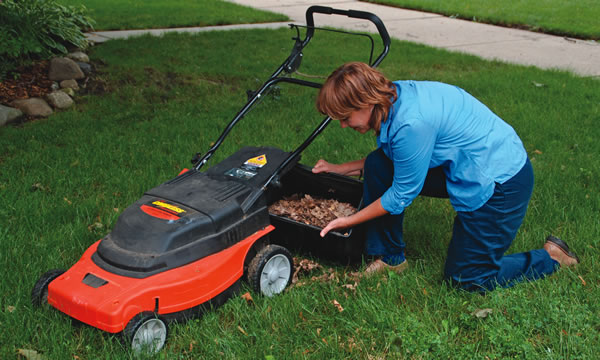Don’t let a busy schedule stop you from creating a beautiful landscape.
By Melinda Myers
Don’t let a busy schedule stop you from creating a beautiful landscape. Incorporate a few of these changes in your fall landscape care. You’ll create beautiful results with a limited investment of time and effort.
Cut the grass, recycle fall leaves, and improve the soil with a pass of the lawn mower. Shred leaves and leave them on the lawn as you mow this fall. As long as you can see the grass through the leaf pieces, the lawn will be fine. As the leaves break down they add organic matter to the soil, improving drainage in clay soil and water holding ability in sandy soils. Or, as an alternative, use excess leaves as a soil mulch. Shred the leaves with your mower and spread a layer over the soil to conserve moisture and insulate the roots of perennials. Fall mulching gives you a jump on next spring’s landscape chores.
Improve your lawn’s health by fertilizing this fall with a low nitrogen slow release fertilizer, like Milorganite. You’ll reduce the risk of disease problems and with slower weed growth in fall, your lawn, not the weeds, will benefit from the nutrients. Fall fertilization also helps lawns recover from the stresses of summer by encouraging deep roots and denser growth that can better compete with weeds and tolerate disease and insects.
Do a bit of planting. Cool season annuals brighten up the fall garden and, for those in warmer regions, the winter garden. Consider adding cold-hardy pansies. They provide color in the fall garden, survive most winters, and are back blooming in the spring. Fall is also a good time to plant perennials, trees and shrubs. The soil is warm and the air cooler, so the plants are less stressed and establish more quickly. Select plants suited to the growing conditions and be sure to give them plenty of room to reach their mature size.
Plant daffodils, tulips, hyacinths and other bulbs in fall for extra color next spring. Set the bulbs at a depth of two to three times their height deep. Then cover them with soil and sprinkle on a low nitrogen slow release fertilizer. This type of fertilizer promotes rooting without stimulating fall growth. In southern climes, store the bulbs in a 35 to 45 degree location for at least 14 weeks before planting.
Leave healthy perennials stand for winter. This increases hardiness and adds beauty to the winter landscape with their seed heads, dried foliage and the birds they attract. Be sure to remove any diseased or insect-infested plants to reduce the source of pest problems in next year’s garden.
Start composting or add shredded leaves and other plant debris to an existing compost pile. Combine fall leaves with other plant waste, a bit of soil or compost, and sprinkle with fertilizer to create compost. Recycling yard waste saves time bagging, hauling and disposing of green debris. You also reduce or eliminate the need to buy soil amendments to improve your existing garden soil.
Incorporate one or all six of these practices to increase the health and beauty of your landscape now and for years to come.
Gardening expert Melinda Myers has more than 30 years of horticulture experience.




